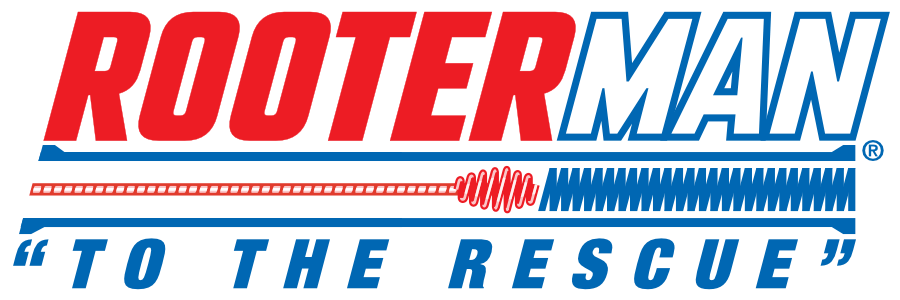A Complete Guide to Parking Lot Striping
Maintaining a well-marked parking lot is essential for any property owner, especially in high-traffic areas like Monmouth County, New Jersey. Whether you manage a commercial property, residential complex, or public facility, having clearly defined parking spaces and traffic lanes not only enhances safety but also contributes to the overall aesthetic appeal. The process of parking lot striping may seem daunting at first, but with the right knowledge and resources, it can be a manageable and rewarding endeavor. In this guide, we will explore the essential steps and considerations for parking lot striping, providing valuable insights for property owners in Monmouth County and beyond.
Parking Lot Striping
Parking lot striping serves as a vital component of property management, contributing to the safety, organization, and visual appeal of the area. From retail businesses to healthcare facilities, properly marked parking spaces and traffic lanes offer numerous benefits, including:
Enhanced Safety: Well-defined parking spaces and directional markings help drivers navigate the parking lot efficiently, reducing the risk of accidents and improving pedestrian safety.
Optimized Traffic Flow: Clear markings enable smoother traffic flow, minimizing congestion and improving the overall efficiency of the parking lot.
Improved Aesthetics: Crisp, freshly painted lines contribute to a neat and professional appearance, leaving a positive impression on visitors and customers.
Compliance with Regulations: Adhering to local zoning and accessibility regulations ensures that the property remains in compliance with legal requirements, avoiding potential penalties or disputes.
In a bustling area like Monmouth County, where properties experience high volumes of traffic, maintaining properly striped parking lots is crucial for enhancing the overall functionality and appearance of the space.
Preliminary Considerations
Before embarking on a parking lot striping project, several key considerations should be addressed to ensure a successful outcome. Property owners in Monmouth County, NJ, should take the following factors into account:
Local Regulations: Familiarize yourself with the specific regulations and standards set forth by local authorities in Monmouth County regarding parking lot striping. Understanding the legal requirements will guide the striping process and help maintain compliance.
Traffic Patterns: Assess the typical traffic flow and parking demand on your property. Understanding the traffic patterns will determine the optimal layout and configuration of parking spaces and traffic lanes.
Surface Condition: Evaluate the condition of the parking lot surface to identify any necessary repairs or prep work. Addressing issues such as cracks, potholes, or uneven surfaces before striping is essential for the longevity of the markings.
Preferred Layout: Determine the desired layout for parking spaces, directional arrows, handicap access, and other designated zones. Consider factors such as accessibility, convenience, and capacity when planning the layout.
Budget and Timeline: Establish a realistic budget and timeline for the striping project, accounting for materials, labor, and any potential disruptions to normal operations. Proper planning ensures a smooth and efficient execution of the project.
By addressing these preliminary considerations, property owners can set the stage for a well-organized and effective parking lot striping endeavor that meets the specific needs of their property in Monmouth County, NJ.
Execution of Parking Lot Striping
Once the preliminary considerations have been carefully evaluated, property owners can proceed with the execution of the parking lot striping project. The following steps outline the key elements of the striping process:
1. Surface Preparation: Begin by thoroughly cleaning the parking lot surface to remove dirt, debris, and any existing paint markings. Additionally, repair any surface imperfections, such as cracks or potholes, to ensure a smooth and uniform base for the new markings.
2. Layout Planning: Utilize precise measurements and marking tools to lay out the designated parking spaces, traffic lanes, directional arrows, and other required markings. Careful planning and accuracy are essential to create a well-organized and functional parking lot layout.
3. Material Selection: Choose high-quality paint and striping materials suitable for the specific needs of the property. Consider factors such as durability, visibility, and environmental impact when selecting the appropriate materials for the striping project.
4. Application Process: Employ professional-grade striping equipment and techniques to apply the paint markings with precision and uniformity. Following industry best practices and standards will ensure that the markings are clear, crisp, and long-lasting.
5. Drying and Curing: Allow sufficient time for the paint markings to dry and cure according to the manufacturer’s recommendations. Proper curing is crucial for the durability and longevity of the striping, especially in high-traffic areas like Monmouth County.
6. Post-Striping Inspection: Conduct a thorough inspection of the newly striped parking lot to ensure the accuracy, quality, and compliance of the markings. Address any discrepancies or touch-up requirements promptly to achieve a flawless outcome.
By methodically executing each step of the striping process, property owners can achieve a well-organized and professionally striped parking lot in Monmouth County, NJ, enhancing the functionality and appearance of their property.
Maintenance and Long-Term Care
After the initial striping project is completed, ongoing maintenance and long-term care are essential to preserve the integrity and effectiveness of the parking lot markings. In Monmouth County, where properties endure various weather conditions and traffic volumes, regular maintenance activities should include:
Routine Inspections: Periodically assess the condition of the parking lot markings to identify any signs of wear, fading, or damage. Promptly address any issues to maintain the visibility and functionality of the markings.
Repainting and Restriping: Schedule regular repainting and restriping as part of the property’s maintenance plan. Over time, the paint markings will naturally wear down, requiring periodic touch-ups and repainting to uphold their effectiveness.
Surface Repairs: Address any surface damage, such as cracks or deterioration, to ensure a smooth and even base for the parking lot markings. Regular surface maintenance contributes to the longevity of the striping.
Seasonal Considerations: Consider the impact of seasonal changes on the parking lot markings. Weather-resistant paint and protective coatings can help mitigate the effects of extreme weather conditions, prolonging the lifespan of the markings.
By integrating comprehensive maintenance practices into the long-term care plan for parking lot striping, property owners in Monmouth County can preserve the functionality and visual appeal of their parking lots, ensuring a safe and welcoming environment for visitors and customers.
Final notions
Parking lot striping is a critical aspect of property management, contributing to safety, organization, and curb appeal. For property owners in Monmouth County, New Jersey, maintaining well-marked parking lots is imperative, given the high traffic and diverse needs of the area. By realizing the importance of parking lot striping, addressing preliminary considerations, executing the striping process with precision, and prioritizing long-term maintenance, property owners can ensure that their parking lots are safe, organized, and visually appealing for years to come.







